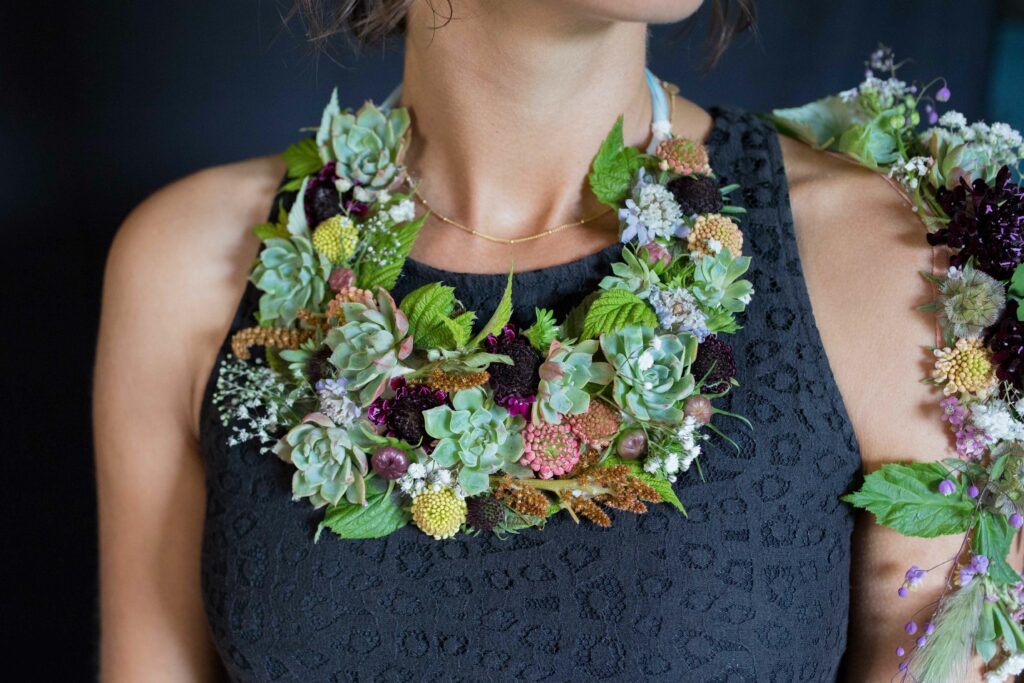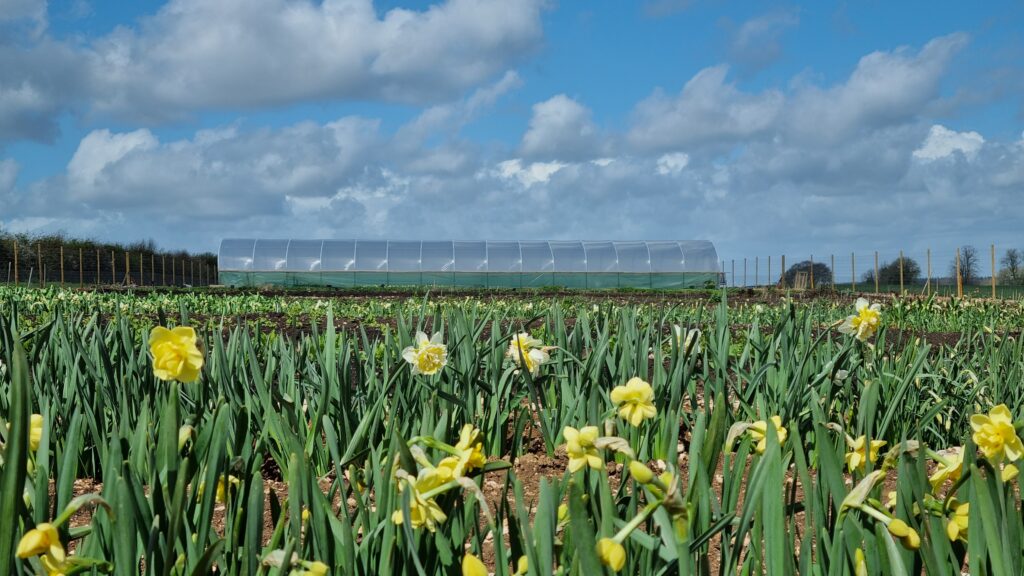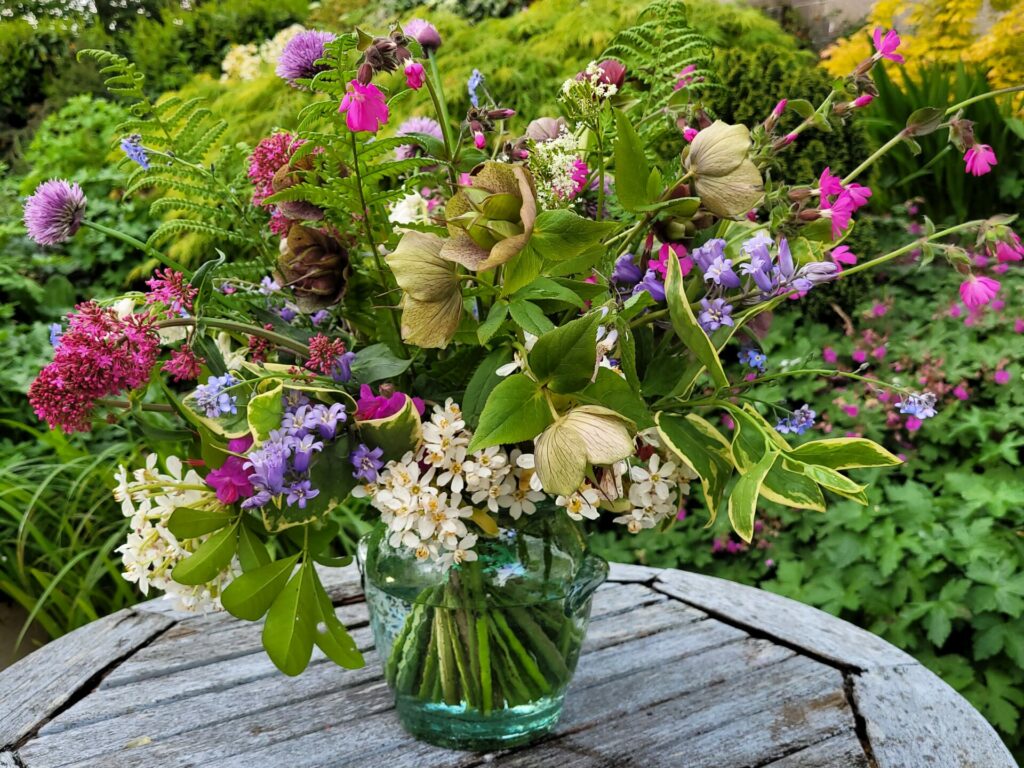New book releases – part 2
2022 is turning out to be a bumper year for book releases by Flowers from the Farm members. From informative growing guides to a celebration of seasonal-led creativity to a specialist study of everlasting flowers, we hear from the authors expanding the library of British seasonal flowers in exciting new directions. The second part of our overview features growers working in very different contexts and with distinct creative approaches – but with a shared goal of educating and inspiring people about truly sustainable flowers and floristry. Let’s hand over to Bex Partridge of Botanical Tales, and Marianne Mogendorff and Camila Romain of Wolves Lane Flower Company.
Flowers Forever – Bex Partridge
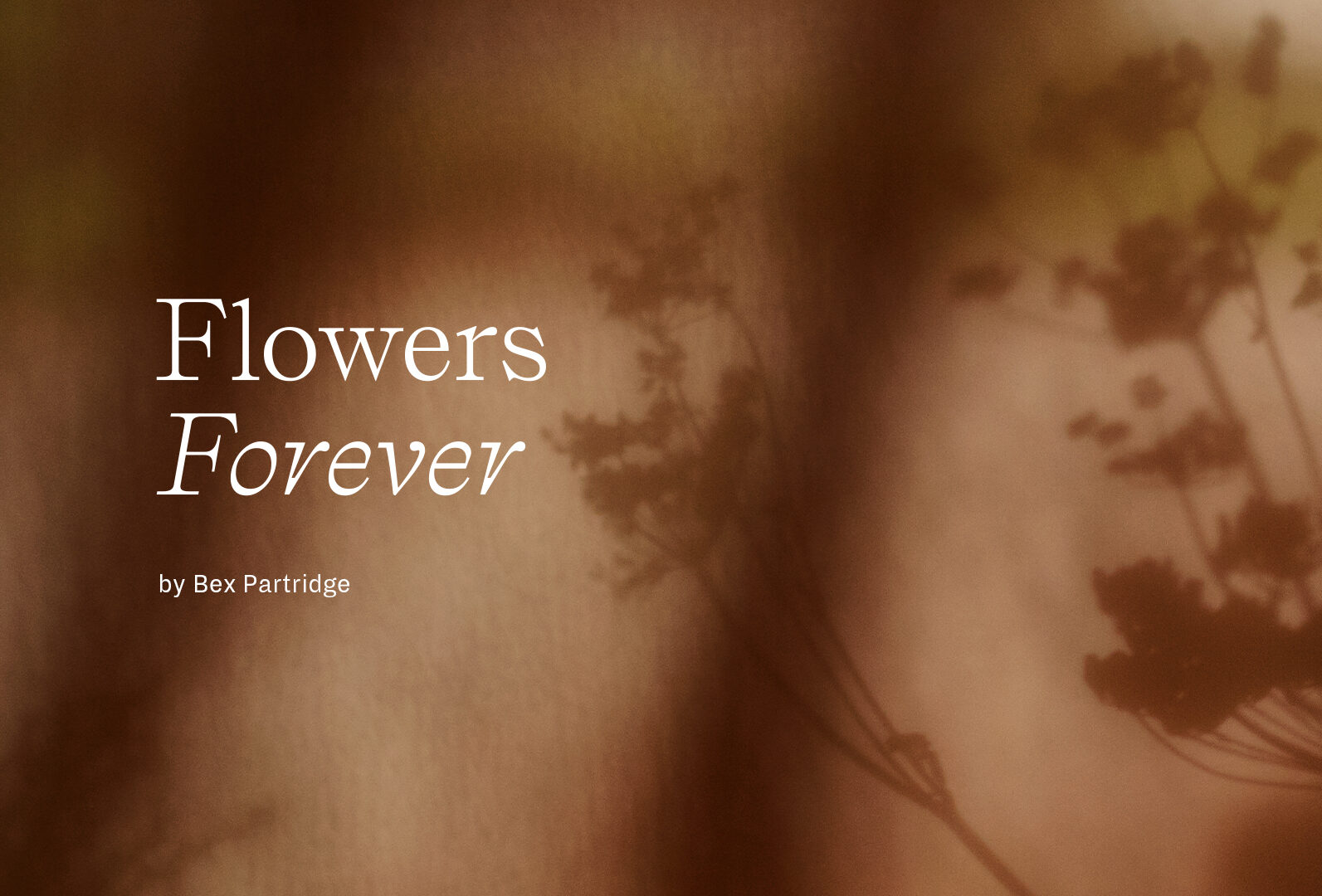
I feel incredibly lucky and privileged to have been given the opportunity to create my second book, Flowers Forever. The idea for it came soon after the publication of my first book, Everlastings, and it was conceived, written and photographed through the pandemic (whilst I was also moving to East Devon!)
This book is a reflection of my increased knowledge of drying flowers as well as the evolution of my work over the past few years. I was able to go into much more detail than in Everlastings on the types of plant materials that I have had success drying, stepping outside of the norms for dried flowers and sharing the many botanicals that may not have been considered before.
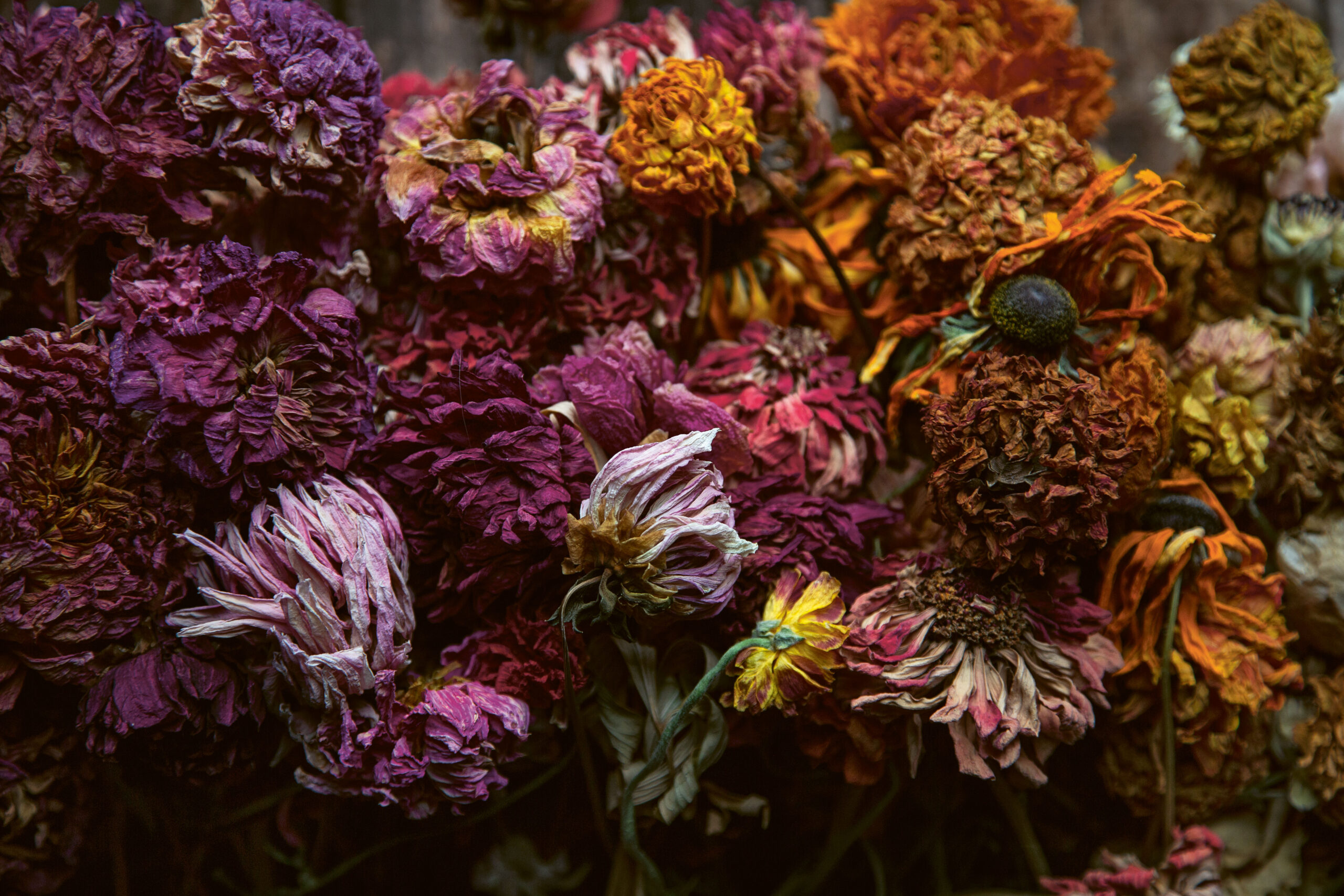
Image credit: Laura Edwards
The part of the book that covers materials is divided up in a way that reflects their eventual use – for height, for fillers, and so on. It is titled: “What, when and how to dry”, with each plant type discussed in detail. Beautiful fresh flower ID shots support the text, and are designed to give extra inspiration. There are also sections on sourcing, sustainability and my approach to growing, including how I make the absolute most out of my spaces.
The second half of the book is devoted to projects, all of which were created to showcase the versatility of dried flowers, seedheads, leaves and more. The ideas range from a flower cloud through to a summer styled tablescape and a winter solstice scene. My aim with each one was to show how I work with the spaces in which I create, so that the display encompasses and connects with its surroundings.
Above all else, with Flowers Forever I aspire to show the reader that even the simplest stems can be used to make the most magnificent creations. We just have to open ourselves up to the beauty of everlastings.
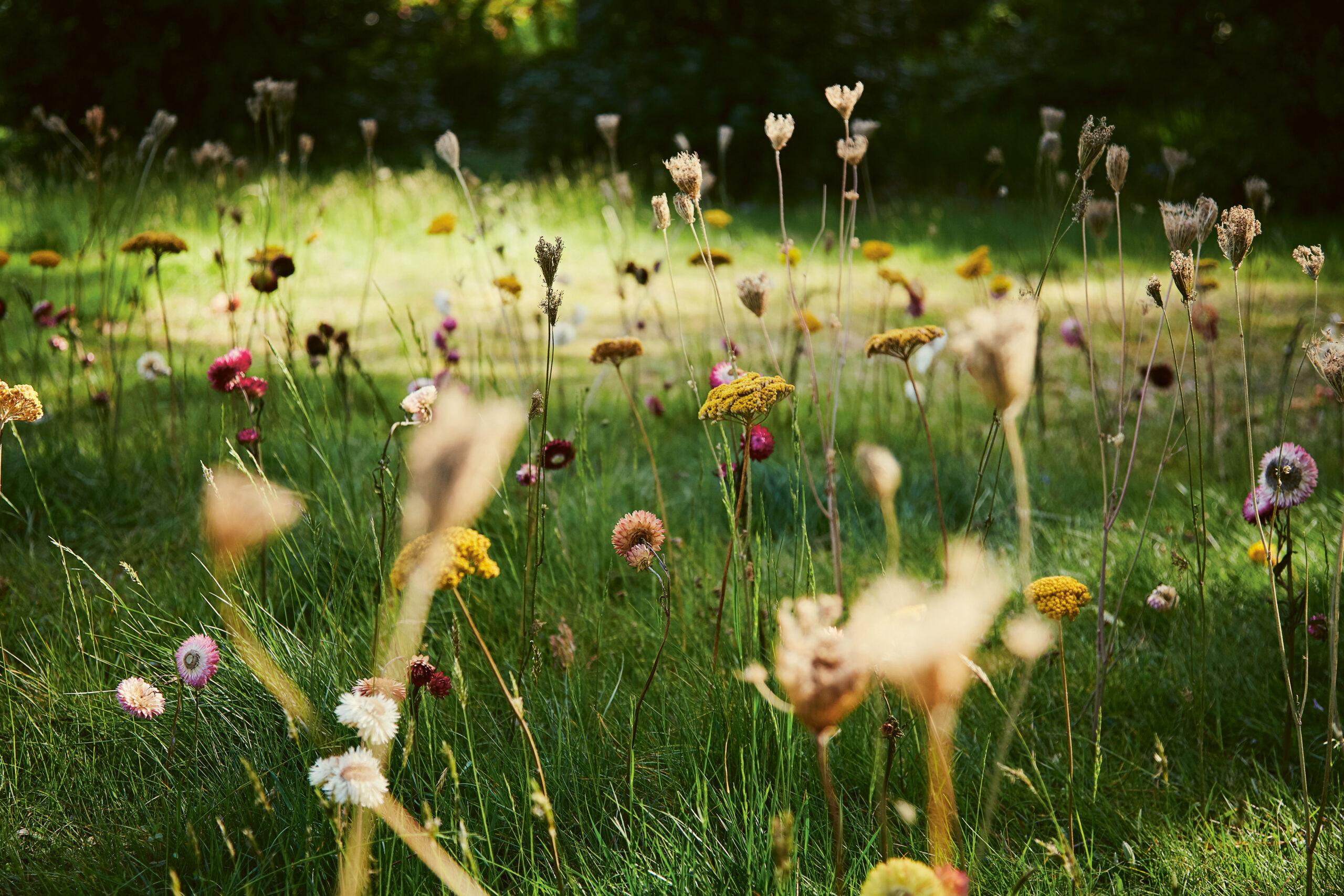
Image credit: Laura Edwards
“The book itself is a beautiful thing to hold in the hand, and the atmospheric photographs by Laura Edwards demonstrate how nothing is off limits, and that dried flowers should not be seen as the gloomy second-best of Winter, but the more dynamic sculptural forms of a wildness that we all need much more of in our lives.” Caroline Beck, Gardens Illustrated review.
(Flowers Forever is out now, and available to buy online here.)
How to Grow the Flowers – Marianne Mogendorff and Camila Romain
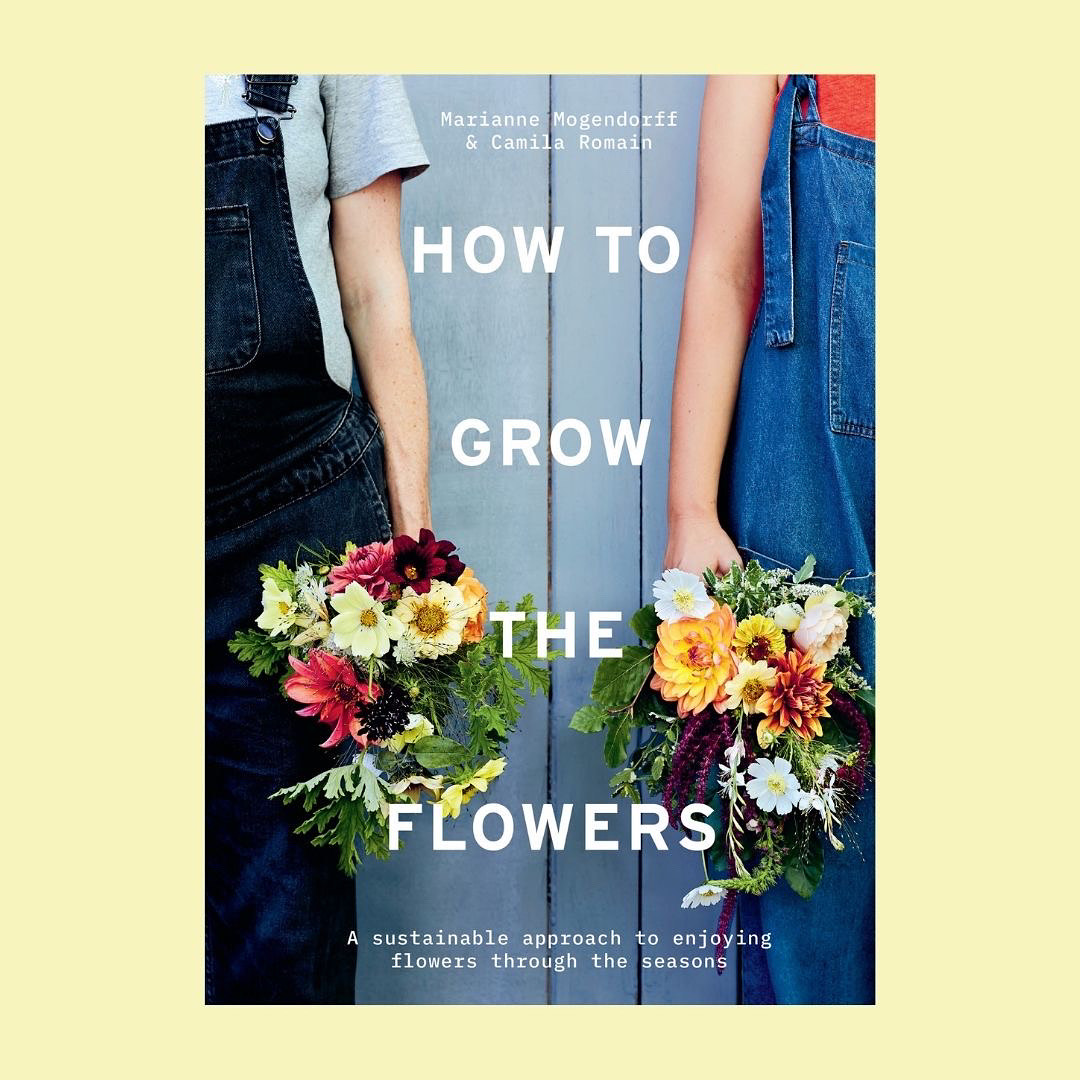
When we were first approached by Pavilion to write a book, back in 2018, we balked at the suggestion. What could we, two newbie, untrained flower growers add to the conversation? We had numerous well-thumbed books on seasonal flower growing filling the shelves in our workshop, written by the women who taught us everything in those early years: Louise Curley, Georgie Newbery, Sarah Raven and Erin Benzakein to name but a few.
But when the pandemic hit two years later, we were inundated with orders for flowers, as well as requests for both paid and voluntary work. 2020 was undoubtedly a challenging time for most businesses, but all those calls and emails had a galvanising effect on us. It was for those nature-starved, career-changing, flower-loving Londoners that we wrote our book: How to Grow the Flowers.
We were environmentalists before we were farmer florists, and it’s within that context that the book takes its seasonal and sustainable approach. Enter the world of horticulture and you’ll be horrified by how many unsustainable practices are still commonplace. The use of peat and noxious pesticides are just the tip of the iceberg. We wanted to empower people who didn’t know anything about horticulture to make sustainable decisions and to fall in love with flowers again through a seasonal lens. We wanted those who hadn’t grown anything before to sow their own seeds, to marvel in the wonder and alchemy that takes place when a seed germinates.
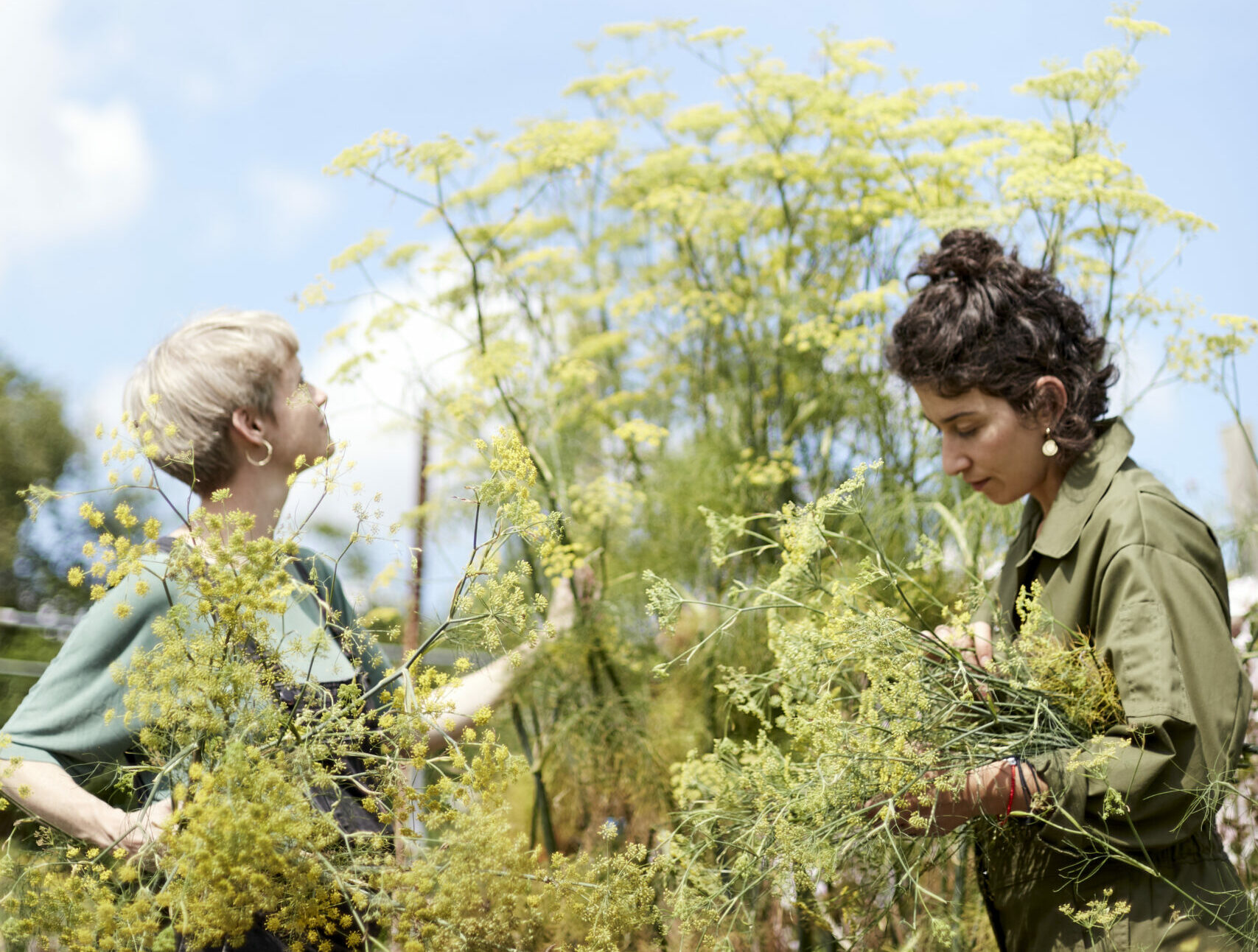
Image credit: Aloha Bonser Shaw
Over the course of the book, we cover all the basics and show people how to grow flowers thriftily. You don’t need hundreds of pounds or a glasshouse to grow flowers, but you do need time, patience and effort! How to Grow the Flowers shares all of our lessons learned, our highs and lows, and what has worked for us. The title, as well as being a nod to our floral hero Constance Spry (who wrote How to Do the Flowers), is also a bit of a joke, as there’s no one way to grow flowers – we just share what works for us. Our hope is that by growing flowers, people can create more tangible relationships with nature and become better custodians of the planet.
The book is divided into four seasonal chapters, and we start in autumn, which was fundamental for us. It’s a long wait for flowers if you only start sowing in the spring, and it’s a lot to ask from people who are used to immediate gratification to wait 4 – 6 months before they see any flowers!
Within each chapter there are four sections: Soil, Seed, Tend and Harvest. We start with the soil every time because this is everything to us. It might seem dull, but soil is the key to successful growing, and we must always make sure to give back as much as we take out of it. ‘Seed’ covers anything to do with propagation, and we go through step-by-step instructions on everything from sowing seed to taking cuttings, dividing dahlias and chitting corms. ‘Tend’ covers all the important seasonal jobs that we do on the plot and in our gardens, and ‘Harvest’ is all about the bounty, and the reward for the hard graft.
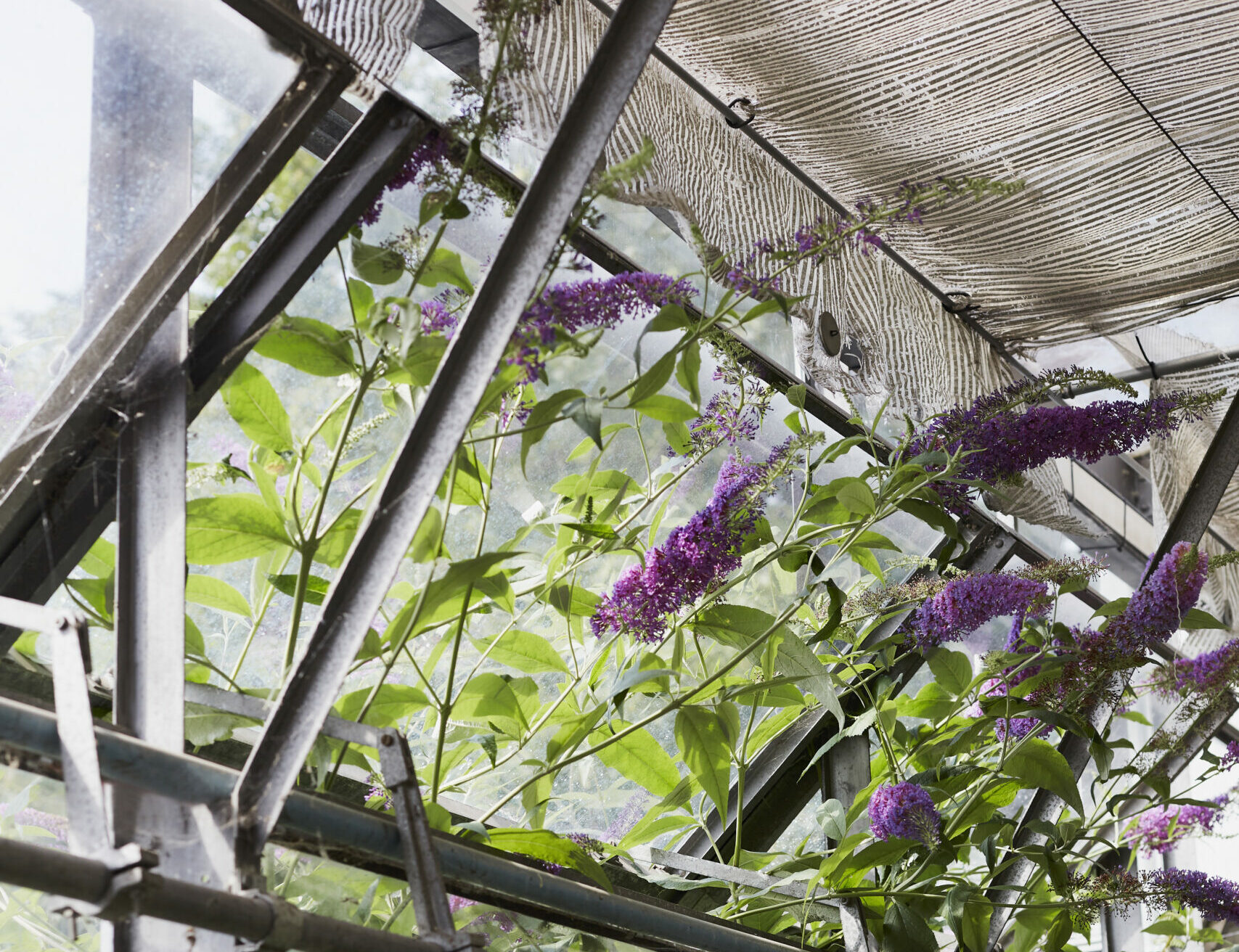
Image credit: Aloha Bonser Shaw
Each chapter ends with a flower project, which was our license to go to town and do something really fun with the blooms. We explain how to recreate each project at home on a smaller scale, and share our sustainable mechanics.
There’s a glossary at the back of the book to explain all the horticultural language that can make gardening feel like a club for those in the know. But hopefully our readers will be well versed in their hardy annuals, overwintering, nematodes and mulch by the end of their time with us. We’ve also included a resources section to help people source peat-free organic compost, seeds, bulbs, the lot!
Finally, we were incredibly lucky to work with Aloha Bonser Shaw, our photographer. She visited us at Wolves Lane throughout a whole season, so the book is a real journey through the flower farming calendar. It’s full of wonderful images, and captures all the magic of our (slightly dishevelled!) urban growing site.
(How to Grow the Flowers is published on September 15th 2022 by Pavilion Books. You can preorder it here – or here.)
